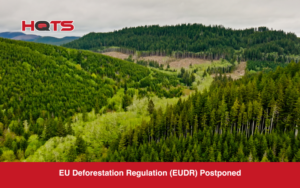Amazon’s global marketplace provides huge opportunities for companies selling clothing, apparel and textiles. In fact, as you can see here, this category of Amazon products has been growing year-on-year, meaning there are huge opportunities to grow your company by beginning to sell these products.
However, selling textiles isn’t simple, and navigating the site’s complicated requirements and rules around compliance can be tricky. Ignoring this labyrinth of rules is also very risky, since the punishment for not complying can be anything from damaging your company’s reputation to receiving hefty fines and bans from the platform.
But don’t worry, HQTS are here to help. We’ve put together this comprehensive guide that should help you start selling your clothing products, whether you’re selling from the US or the EU.
US Compliance Guidelines
The US has a number of regulations surrounding the selling of textiles that differ from other places in the world, such as the EU, that are enforced by Amazon and government bodies like the FTC. Let’s dive in and see what you’ll need to consider before beginning to sell your products in America.
The Consumer Product Safety Improvement Act (CPSIA) is the first and foremost rule your products will need to follow, which you can read more about here.
If you are selling products for children, they need to have been tested for flammability and small parts, and you will require test reports and certificates from laboratories. They must also abide by restrictions on certain ingredients (lead, phthalates, etc) and need a Children’s Product Certificate (CPC). Finally, your product may need labels for warnings, tracking and cautions (and should include these in the product description).
There are also strict flammability standards laid out in the CPSC surrounding products for sleepwear and general wear. There are also strict rules for potential hazards like drawstrings. Ensure your products abide by these and you have evidence to support this fact.
The FTC also has rules around wool and textiles, particularly in regards to labelling. Labels should include information about fiber content, country of origin, the manufacturer’s (or importer’s) identity and care instructions.
Beyond federal regulations, Amazon has its own set of rules for sellers, especially for those using Fulfillment by Amazon (FBA).
Firstly, all claims made in your product listings (e.g., “100% cotton,” “organic”) must be accurate and substantiated. Amazon may request proof, such as test results or certifications.
Next, all clothing items should be neatly folded and placed in transparent, sealed poly bags (minimum 1.5 mil thickness) with a suffocation warning label. Each unit needs a scannable barcode (UPC, EAN, or FNSKU) visible on the outside of the packaging.
And finally, Amazon may request permanent tracking labels on the product and packaging, including the manufacturer’s or private labeler’s name, location, and date of manufacture.
EU Compliance Guidelines
Just like the US, the EU has a number of regulatory bodies that enforce strict rules around the selling of textiles. Let’s discuss what you need to consider before distributing your products throughout Europe.
The EU Textiles Regulation is the cornerstone of labelling requirements for EU sellers, and requires that your labels list information about fibre composition and any non-textile animal parts. Labels must also be durable and legible, and be written in the official language of the country the product originates from.
The EU has rules regarding hazardous chemicals in textiles, particularly in regards to specific dyes and flame retardants, and requires that they be treated with biocidal substances like antimicrobial treatments before they can be sold. Ensure your products abide by these standards.
General apparel must also meet general safety requirements laid out in GPSR regulations, while workwear apparel is subject to stricter PPE guidelines.
Amazon’s European marketplaces also have their own requirements for sellers. Sellers must be VAT registered in every EU country where they store inventory or exceed the distance selling threshold, and EU legislation mandates a minimum 14-day return period for online purchases, which Amazon’s policies reflect. They must also adhere to Amazon’s specific style guides for clothing images and product listings.
What are the Risks of Selling Non-Compliant Products on Amazon?
Ignoring compliance guidelines for textiles and apparel can lead to serious trouble. Cutting corners isn’t just a minor slip-up; it can result in major costs, an irreparable reputation, and even the end of your Amazon business.
Regulatory bodies like the FTC (US) and certain EU authorities will impose significant penalties for incorrect labeling, missing info, or safety failures (especially for children’s products). These fines could add up to thousands or hundreds of thousands, and if you are also forced to recall a product, these costs can increase even more.
Amazon is also very adept at detecting non-compliant products, and if they detect that your products don’t follow regulations, they will most likely be taken down and your company will usually face punishment by being suspended or even banned from selling on the platform. If the product isn’t taken down, you could still tarnish your reputation beyond repair as a result of negative reviews or even liability lawsuits.
Don’t Worry – HQTS has Apparel Compliance Covered
Navigating textile compliance for Amazon in the US and EU is a massive challenge. That’s where HQTS comes in.
We offer comprehensive services to help textile and apparel sellers meet strict industry standards with ease. Through inspections, document reviews, and supplier audits, we make sure the products we work with make it to market without issues.
By partnering with HQTS, you can confidently scale your business on Amazon, protecting your brand and knowing your compliance is in expert hands. If this sounds like something you could use some help with, please get in touch.
We hope this guide has helped you kickstart your online apparel or textile business, and wish you success with your selling!




